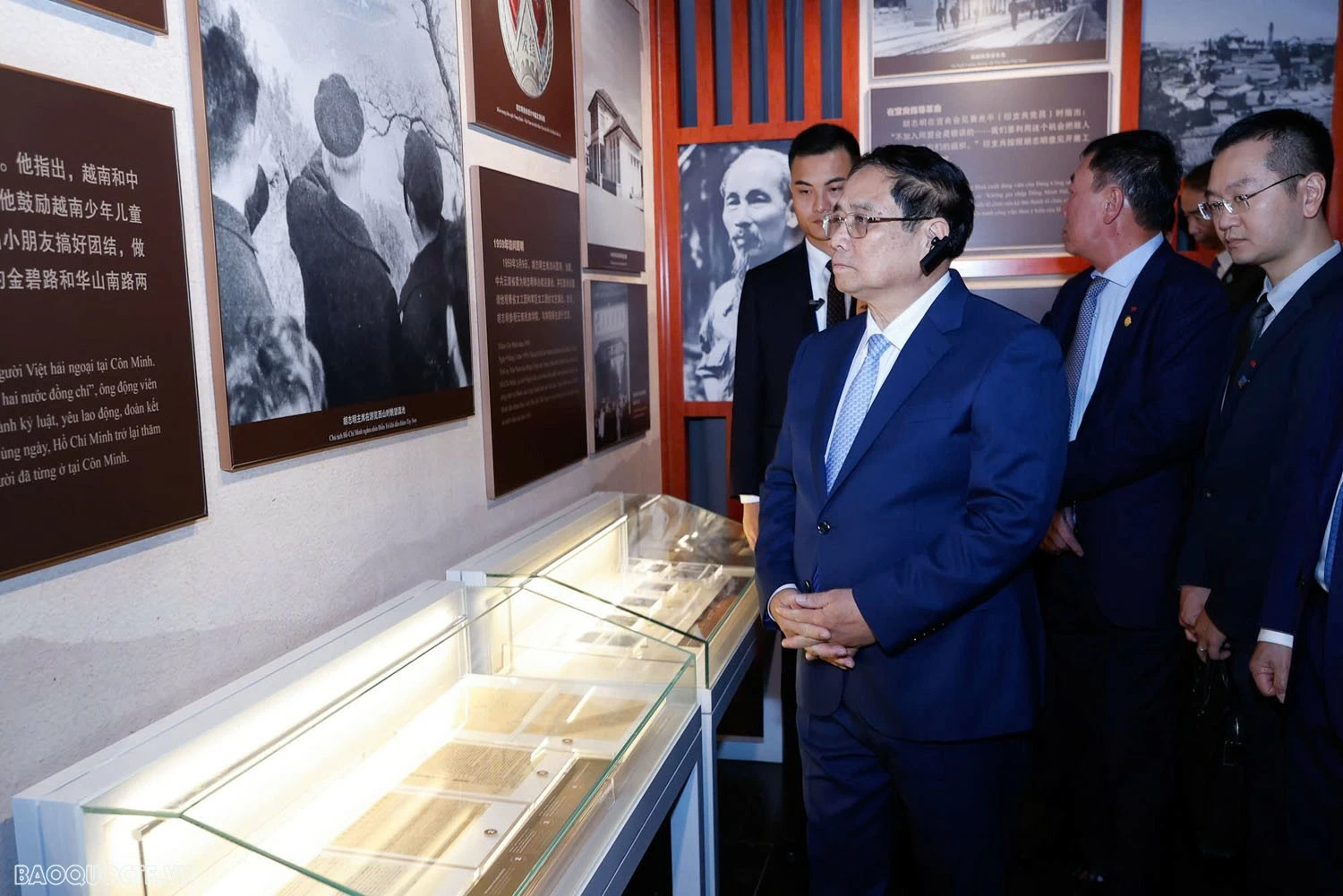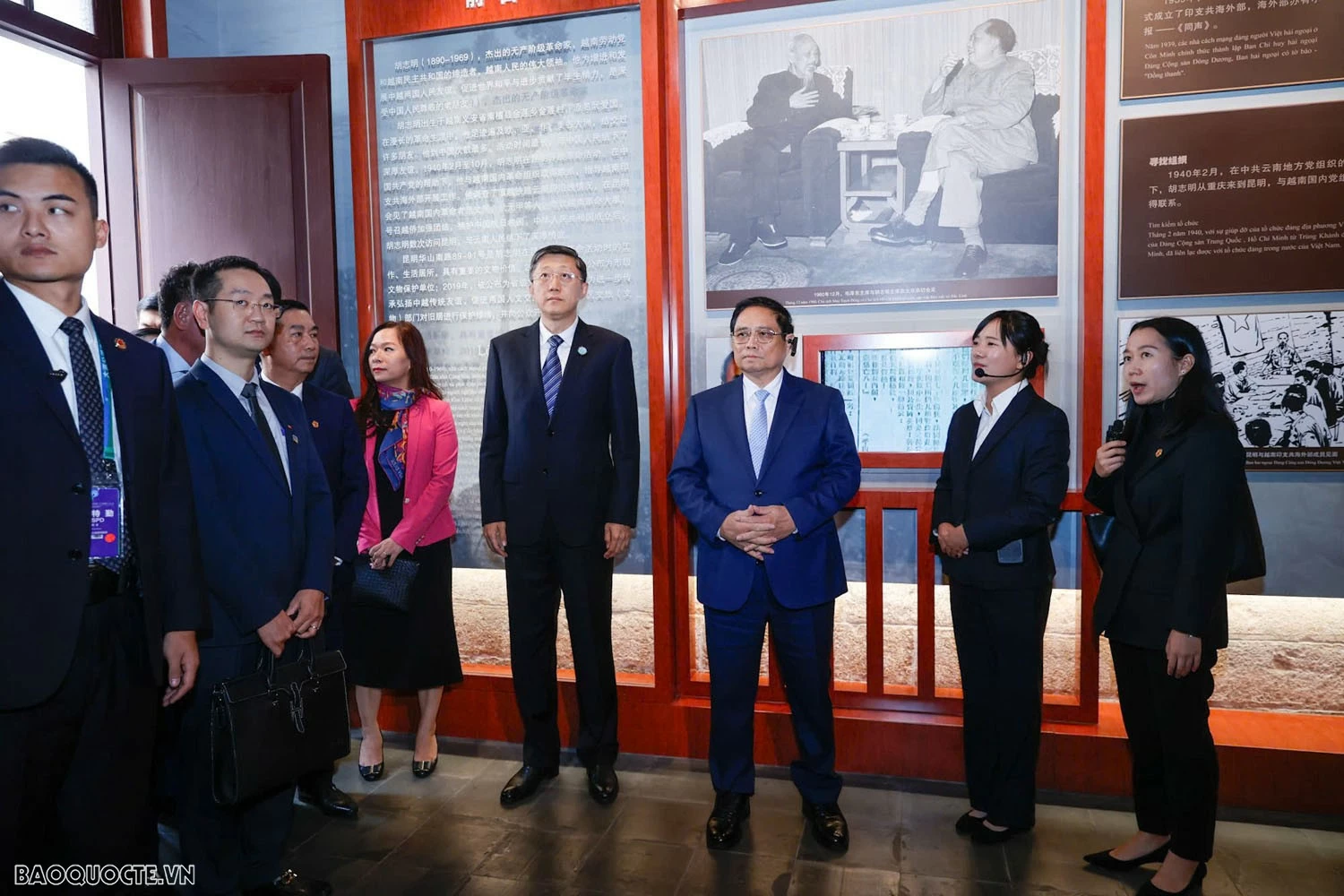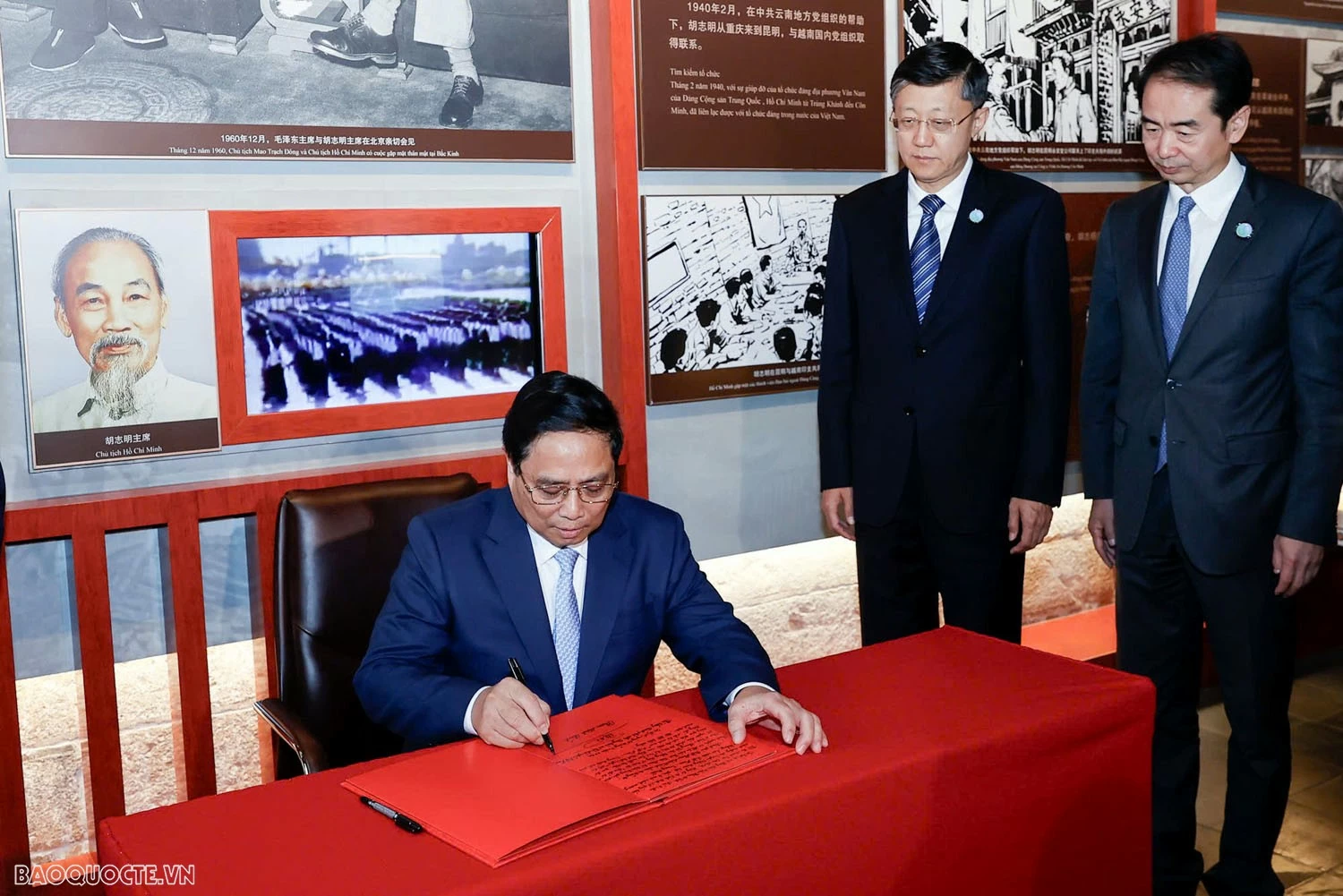
PM Pham Minh Chinh visits President Ho Chi Minh relic site in Kunming
Latest
 |
| There are a lot of artifacts, photos and documents related to President Ho Chi Minh during his stay in the city are on displayed at the relic site. (Photo: Quang Hoa) |
The relic site, located at No. 89-91 on Hua Shan Nan street in Kunming, was where Nguyen Ai Quoc, who later became President Ho Chi Minh, lived and worked from February to October, 1940. During that time, he met several Vietnamese revolutionists, including Pham Van Dong and Vo Nguyen Giap, to discuss important events of the Vietnamese revolution.
A lot of artifacts, photos and documents related to President Ho Chi Minh during his stay in the city are on displayed at the relic site.
 |
| There are a lot of artifacts, photos and documents related to President Ho Chi Minh during his stay in the city are on displayed at the relic site. (Photo: Quang Hoa) |
The house was recognised as a cultural relic site protected at the municipal level in 2011, and at the provincial level in 2019.
To continue preserving and promoting the traditional friendship between China and Vietnam, and enhance cultural and people-to-people exchanges between the two countries, the historical relic site was renovated in 2022.
 |
| Writing in the guestbook, Prime Minister Chinh affirmed that the relic site exemplifies the tradition of solidarity and close ties between the revolutionary movements of the two Parties and the two countries. (Photo: Quang Hoa) |
Writing in the guestbook, Prime Minister Chinh affirmed that the relic site exemplifies the tradition of solidarity and close ties between the revolutionary movements of the two Parties and the two countries.
 |
| The Vietnamese Government sincerely thanks the Party organisation, authority and people of Yunnan province for preserving the site. (Photo: Quang Hoa) |
The Vietnamese Government sincerely thanks the Party organisation, authority and people of Yunnan province for preserving the site, Prime Minister Chinh stated, affirming that this is always a "red address” to educate people, especially young people, on the traditional relations between Vietnam and China, thus contributing to further strengthening the friendship as “both comrades and brothers” between the two nations.













